Structure and drug resistance of the Plasmodium falciparum transporter PfCRT
- PMID: 31776516
- PMCID: PMC6911266
- DOI: 10.1038/s41586-019-1795-x
Structure and drug resistance of the Plasmodium falciparum transporter PfCRT
Abstract
The emergence and spread of drug-resistant Plasmodium falciparum impedes global efforts to control and eliminate malaria. For decades, treatment of malaria has relied on chloroquine (CQ), a safe and affordable 4-aminoquinoline that was highly effective against intra-erythrocytic asexual blood-stage parasites, until resistance arose in Southeast Asia and South America and spread worldwide1. Clinical resistance to the chemically related current first-line combination drug piperaquine (PPQ) has now emerged regionally, reducing its efficacy2. Resistance to CQ and PPQ has been associated with distinct sets of point mutations in the P. falciparum CQ-resistance transporter PfCRT, a 49-kDa member of the drug/metabolite transporter superfamily that traverses the membrane of the acidic digestive vacuole of the parasite3-9. Here we present the structure, at 3.2 Å resolution, of the PfCRT isoform of CQ-resistant, PPQ-sensitive South American 7G8 parasites, using single-particle cryo-electron microscopy and antigen-binding fragment technology. Mutations that contribute to CQ and PPQ resistance localize primarily to moderately conserved sites on distinct helices that line a central negatively charged cavity, indicating that this cavity is the principal site of interaction with the positively charged CQ and PPQ. Binding and transport studies reveal that the 7G8 isoform binds both drugs with comparable affinities, and that these drugs are mutually competitive. The 7G8 isoform transports CQ in a membrane potential- and pH-dependent manner, consistent with an active efflux mechanism that drives CQ resistance5, but does not transport PPQ. Functional studies on the newly emerging PfCRT F145I and C350R mutations, associated with decreased PPQ susceptibility in Asia and South America, respectively6,9, reveal their ability to mediate PPQ transport in 7G8 variant proteins and to confer resistance in gene-edited parasites. Structural, functional and in silico analyses suggest that distinct mechanistic features mediate the resistance to CQ and PPQ in PfCRT variants. These data provide atomic-level insights into the molecular mechanism of this key mediator of antimalarial treatment failures.
Conflict of interest statement
Figures


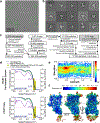
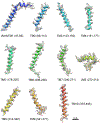
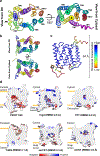
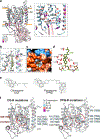
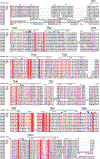

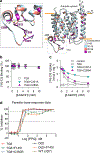
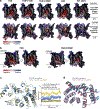
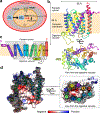


Comment in
-
Malaria parasites fine-tune mutations to resist drugs.Nature. 2019 Dec;576(7786):217-219. doi: 10.1038/d41586-019-03587-0. Nature. 2019. PMID: 31822828 No abstract available.
References
-
- Martin RE et al. Chloroquine transport via the malaria parasite’s chloroquine resistance transporter. Science 325, 1680–1682 (2009). - PubMed
Extended Data References
-
- Kawate T & Gouaux E Fluorescence-detection size-exclusion chromatography for precrystallization screening of integral membrane proteins. Structure 14, 673–681 (2006). - PubMed
-
- Gibson DG et al. Enzymatic assembly of DNA molecules up to several hundred kilobases. Nat. Methods 6, 343 (2009). - PubMed
-
- Wright DJ, O’Reilly M & Tisi D Engineering and purification of a thermostable, high-yield, variant of PfCRT, the Plasmodium falciparum chloroquine resistance transporter. Protein. Expr. Purif 141, 7–18 (2018). - PubMed
Publication types
MeSH terms
Substances
Grants and funding
- T32 HL120826/HL/NHLBI NIH HHS/United States
- P41 GM103310/GM/NIGMS NIH HHS/United States
- P41 GM116799/GM/NIGMS NIH HHS/United States
- R01 AI050612/AI/NIAID NIH HHS/United States
- P41 RR001209/RR/NCRR NIH HHS/United States
- R01 GM111980/GM/NIGMS NIH HHS/United States
- R01 GM117372/GM/NIGMS NIH HHS/United States
- R01 AI111962/AI/NIAID NIH HHS/United States
- R01 GM119396/GM/NIGMS NIH HHS/United States
- R35 GM132120/GM/NIGMS NIH HHS/United States
- R01 AI050234/AI/NIAID NIH HHS/United States
- R01 AI147628/AI/NIAID NIH HHS/United States
- T32 AI106711/AI/NIAID NIH HHS/United States
- R01 AI124678/AI/NIAID NIH HHS/United States
- R01 AI109023/AI/NIAID NIH HHS/United States
- R01 AI056312/AI/NIAID NIH HHS/United States
- R37 AI050234/AI/NIAID NIH HHS/United States
LinkOut - more resources
Full Text Sources
Other Literature Sources
Molecular Biology Databases

